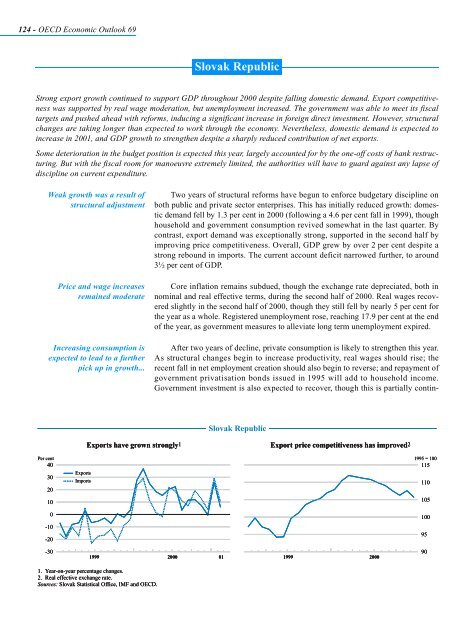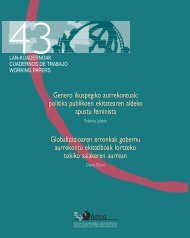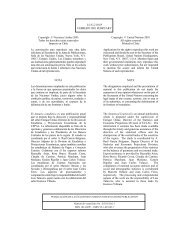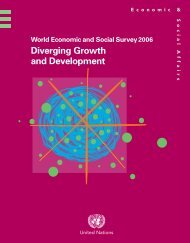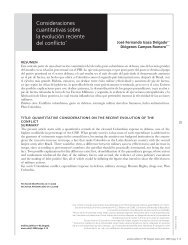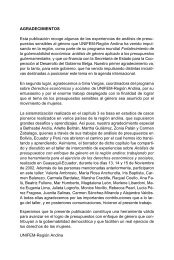OECD Economic Outlook 69 - Biblioteca Hegoa
OECD Economic Outlook 69 - Biblioteca Hegoa
OECD Economic Outlook 69 - Biblioteca Hegoa
Create successful ePaper yourself
Turn your PDF publications into a flip-book with our unique Google optimized e-Paper software.
124 - <strong>OECD</strong> <strong>Economic</strong> <strong>Outlook</strong> <strong>69</strong><br />
Strong export growth continued to support GDP throughout 2000 despite falling domestic demand. Export competitiveness<br />
was supported by real wage moderation, but unemployment increased. The government was able to meet its fiscal<br />
targets and pushed ahead with reforms, inducing a significant increase in foreign direct investment. However, structural<br />
changes are taking longer than expected to work through the economy. Nevertheless, domestic demand is expected to<br />
increase in 2001, and GDP growth to strengthen despite a sharply reduced contribution of net exports.<br />
Some deterioration in the budget position is expected this year, largely accounted for by the one-off costs of bank restructuring.<br />
But with the fiscal room for manoeuvre extremely limited, the authorities will have to guard against any lapse of<br />
discipline on current expenditure.<br />
Per cent<br />
40<br />
Weak growth was a result of<br />
structural adjustment<br />
Price and wage increases<br />
remained moderate<br />
Increasing consumption is<br />
expected to lead to a further<br />
pick up in growth...<br />
30<br />
20<br />
10<br />
0<br />
-10<br />
-20<br />
-30<br />
Exports<br />
Imports<br />
Slovak Republic<br />
Two years of structural reforms have begun to enforce budgetary discipline on<br />
both public and private sector enterprises. This has initially reduced growth: domestic<br />
demand fell by 1.3 per cent in 2000 (following a 4.6 per cent fall in 1999), though<br />
household and government consumption revived somewhat in the last quarter. By<br />
contrast, export demand was exceptionally strong, supported in the second half by<br />
improving price competitiveness. Overall, GDP grew by over 2 per cent despite a<br />
strong rebound in imports. The current account deficit narrowed further, to around<br />
3½ per cent of GDP.<br />
Core inflation remains subdued, though the exchange rate depreciated, both in<br />
nominal and real effective terms, during the second half of 2000. Real wages recovered<br />
slightly in the second half of 2000, though they still fell by nearly 5 per cent for<br />
the year as a whole. Registered unemployment rose, reaching 17.9 per cent at the end<br />
of the year, as government measures to alleviate long term unemployment expired.<br />
After two years of decline, private consumption is likely to strengthen this year.<br />
As structural changes begin to increase productivity, real wages should rise; the<br />
recent fall in net employment creation should also begin to reverse; and repayment of<br />
government privatisation bonds issued in 1995 will add to household income.<br />
Government investment is also expected to recover, though this is partially contin-<br />
Slovak Republic<br />
Exports have grown strongly1 strongly1 strongly1 Export price competitiveness has improved2 improved2 improved2<br />
1999 2000 01 1999 2000<br />
1. Year-on-year percentage changes.<br />
2. Real effective exchange rate.<br />
Sources: Slovak Statistical Office, IMF and <strong>OECD</strong>.<br />
1995 = 100<br />
115<br />
110<br />
105<br />
100<br />
95<br />
90


